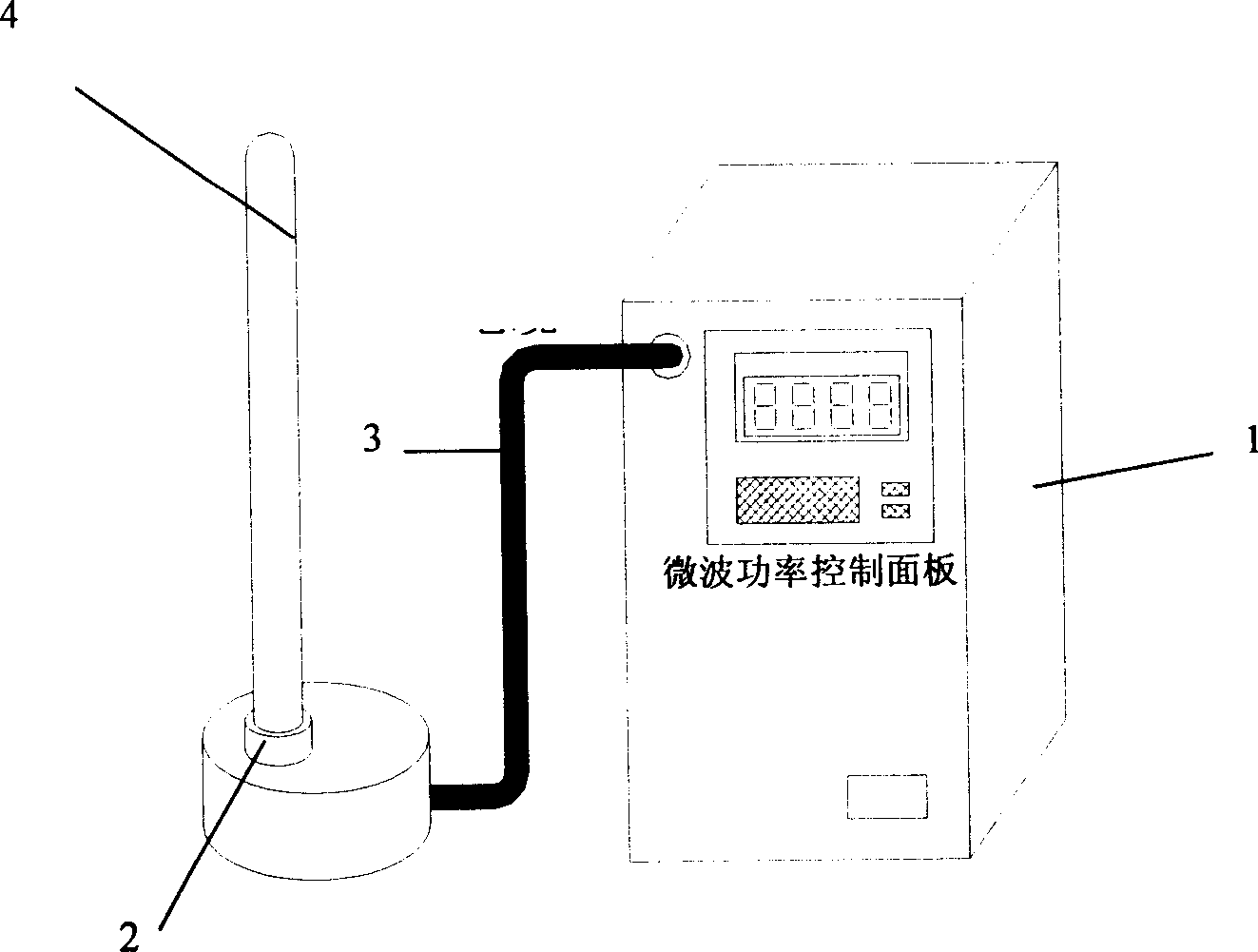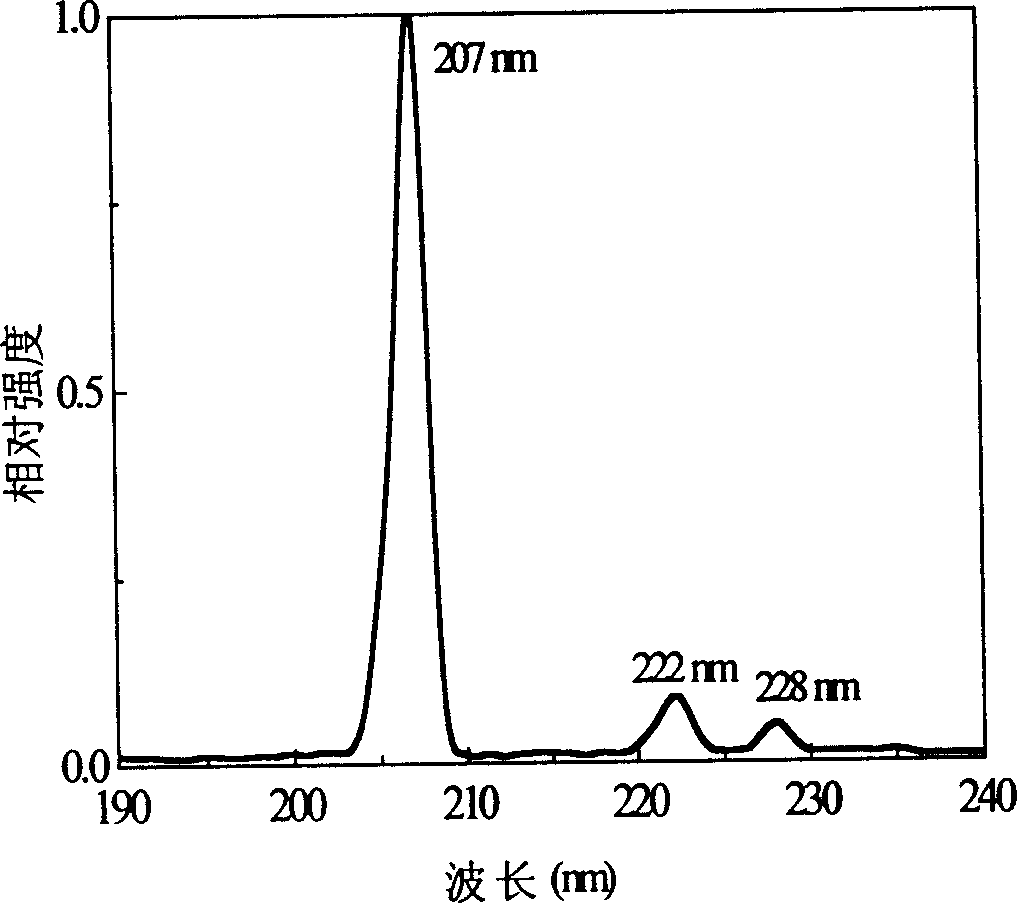Electrodes microwave discharging light with 190nm and 207nm quasi-molecule and use thereof
A 207nm, discharge lamp technology, applied in the field of photochemistry, can solve the problems of single spectral line, unavoidable energy utilization rate, short life of electrode discharge UV lamp, etc., and achieve the effect of prolonging life.
- Summary
- Abstract
- Description
- Claims
- Application Information
AI Technical Summary
Problems solved by technology
Method used
Image
Examples
Embodiment 1
[0038] 207nm KrBr * Excimer microwave electrodeless ultraviolet lamp (Kr-Br 2 The total pressure of the mixed gas is 10torr, Kr:Br 2 The air pressure ratio is 50:1, the outer diameter of the lamp tube is 20mm, and the length is 30cm) directly photodegrades high-concentration dye wastewater, and the refractory triphenylmethane dye rhodamine B is selected as the treatment object, the treatment concentration is 20mg / L, and the treatment capacity is 400ml. The microwave power used is 600W, and the decolorization rate is measured after 10 minutes of light > 99%, COD Cr The removal rate reaches 90%.
Embodiment 2
[0040] 190nm KrI * Excimer microwave electrodeless ultraviolet lamp (Kr-I 2 The total pressure of the mixed gas is 2.5torr, Kr:I 2 The air pressure ratio is 50:1, the outer diameter of the lamp tube is 10mm, and the length is 30cm) to directly photodegrade the malodorous carbon disulfide gas, and the microwave power used is 400W. Carbon disulfide gas adopts flow dynamic sampling, the residence time of the gas in the light irradiation area is 1s, and the concentration of carbon disulfide gas is 20mg / m 3 . Test results show that the treatment device can effectively remove carbon disulfide odor pollution, and the removal rate is as high as 90%.
PUM
| Property | Measurement | Unit |
|---|---|---|
| Wavelength | aaaaa | aaaaa |
Abstract
Description
Claims
Application Information
 Login to View More
Login to View More - R&D
- Intellectual Property
- Life Sciences
- Materials
- Tech Scout
- Unparalleled Data Quality
- Higher Quality Content
- 60% Fewer Hallucinations
Browse by: Latest US Patents, China's latest patents, Technical Efficacy Thesaurus, Application Domain, Technology Topic, Popular Technical Reports.
© 2025 PatSnap. All rights reserved.Legal|Privacy policy|Modern Slavery Act Transparency Statement|Sitemap|About US| Contact US: help@patsnap.com


